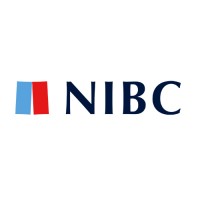In this blog, Sabbir provides an in-depth look into project finance. He discusses the benefits and challenges of project finance transactions, and reveals the sectors in which the financing method is commonly used.
What is Project Finance?
Project finance is a financing method that is commonly used to fund the development, construction, and operation of specific large-scale industrial construction projects. Transactions involve the creation of a separate legal entity, typically a special purpose vehicle (SPV), which is funded through a combination of debt and equity and is responsible for commercial delivery and economic realisation of the project’s financial model.
The creation of an SPV allows the equity investors in the SPV, known as project sponsors, to insulate the debt financing of the project from their own balance sheets, ring-fencing their financial risk exposures. The project sponsors encountered during my sell-side investment banking career were typically consortiums of investors, comprised of private companies with specialist industry and operational expertise, such as ENGIE and Samsung C&T (Construction & Trading), sector-specific private equity funds, such as ACWA Power, and sometimes governments and sovereign wealth funds, such as various UK government departments and SAMA (The Saudi Arabian Monetary Authority).
Benefits of Project Finance
A key advantage of project finance is that it allows for the allocation of risks to those parties who are best able to manage them. For example, construction risk may be allocated to experienced contractors and operational risk may be allocated to seasoned operators, who are often one of the project sponsors, such as Samsung C&T (Construction & Trading). This helps to ensure that projects are completed on time and within budget.
Challenges of Project Finance
However, project finance can also be complex and time-consuming to arrange, as it requires the negotiation of multiple contracts between the various parties involved, including the project sponsor, the lenders, and the contractors. Furthermore, economically, the project must generate sufficient cash flows to service the debt and pay dividends to the equity investors.
Common Transaction Structures
One common transaction structure used in project finance is the “non-recourse” loan, where the lenders have no recourse to, i.e. no legal right to lay claim to, the assets and cash flows of the project sponsors in the event of default. Instead, the lenders’ source of repayment is legally ringfenced and limited to the cash flows generated by the project itself. This structure is often used to finance infrastructure projects, such as roads, airports, and power plants as these finished projects tend to benefit from inelastic demand and therefore bear low cyclical risk in terms of revenue generation capacity once their construction phases have been completed.
Project finance is also often used in public-private partnerships (PPPs), which involve a partnership between the public and private sectors to finance, construct, and operate a project. These projects can include infrastructure projects such as roads, bridges, hospitals, and schools, as well as social services such as waste management and water treatment.
Project finance is also frequently used in build-own-operate (BOO) projects in the power generation sector. In a BOO independent power project (IPP), a private company is responsible for the design, construction, and operation of an operational power plant, and is also responsible for selling the electricity generated to the end user, often via offtake agreements with governments or energy companies operating in the vicinity of the project. BOO projects can include both traditional fossil fuel power plants and renewable energy sources such as wind and solar and is a structure often used by vertically integrated oil and gas companies.
Further Applications of Project Finance
Project finance finds applications in various other sectors too:
- Mining projects: Project finance is also commonly used to fund the development, construction, and operation of mining projects, such as gold, copper, and iron ore mines. These projects can have long lead times and require significant upfront capital investment and multi-year interest grace periods, making project finance an attractive option for funding.
- Telecommunications projects: Project finance is often used to fund the development, construction, and operation of telecommunications projects, such as the rollout of new mobile networks or the expansion of broadband infrastructure.
- Real estate projects: Project finance is sometimes used to fund the development, construction, and operation of large-scale real estate projects, such as shopping malls, office buildings, and residential developments. These projects can be complex and may involve multiple parties, including developers, contractors, and lenders.
Conclusion
To sum up, project finance is a useful tool for segregating, managing and allocating project risks to those parties best able to manage them. It allows for the development, construction, and operation of a specific project to be funded through a combination of equity investments and debt financing, and is commonly used in PPP and BOO projects. However, it can also be complex and time-consuming to arrange so the assistance of specialist financial advisors is advisable, and projects must have the capacity to generate sufficient cash flows to service the debt and pay dividends to the equity investors, which the financial model will help to assess.
Should you have any questions on this subject, I would be happy to tell you more!












